Investigative Stories
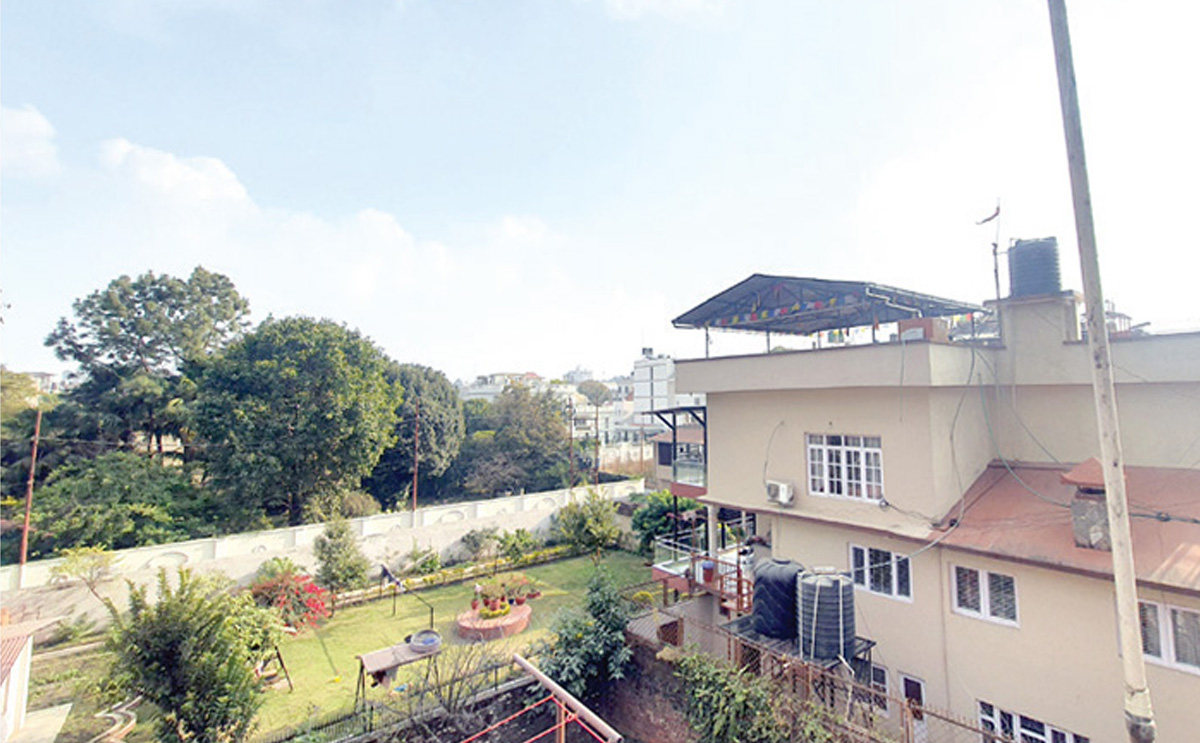
Ramagya Prasad Chaturbedi was once a popular name in political and bureaucratic circles. But by the time he fell down from his house’s balcony and died three years ago, he was nearly forgotten. He was once the chair of Nepal Airlines Corporation and director of National Construction Company Limited. And he maintained a close link with many political leaders and top bureaucrats. The fact that he had amassed illicit properties by exploiting that link wouldn’t remain a secret for long.
On 12 February, 2003, the Commission for the Investigation of Abuse of Authority had filed a case against Chaturbedi, then the chair of NAC, on the charge of amassing illicit wealth worth Rs. 69 million 182 thousand and 535. The CIAA had arrested him on 25 October, 2002 and had filed a corruption case at Special Court 21 days later. The Special Court convicted Chaturbedi on 21 January, 2005. He appealed the conviction at Supreme Court but it upheld the Supreme Court’s decision and ordered his properties be confiscated.
A bench of then Chief Justice Khilraj Regmi and judge Sushila Karki had passed the verdict against Chaturbedi on 7 September, 2011. The verdict ordered that half of the 2 ropanis and 11 aana land in Pepsicola of Kathmandu-33 that he had purchased with wealth gained through illicit means be confiscated.
But that land is still in the name of Chaturbedi’s son Ritesh. Currently, a futsal court ‘Easy Futsal’ is in operation at that land of kitta number 65 and 791. Even if half of that land should have come under Nepal government 13 years ago, the Chaturbedi family is still making income by renting it out. According to the Supreme Court verdict, Chaturbedi’s 5 kattha land in Birgunj-24 should have also come under government ownership, but it hasn’t.
Convicts enjoying properties amassed through illicit means
The Sinamangal-based Shikshyantar Montessori pre-school is also run out of a house and land that were ordered to be seized. The property, sprawling across 10 aana 3 paisa land, belongs to Murari Bahadur Karki, the former director of Inland Revenue Department who was convicted of corruption.
The CIAA had arrested Karki while he was an incumbent at the department and filed a corruption case against him at Special Court in 2063 BS. The CIAA had taken the move after an investigation based on the judicial investigation commission 2058’s report that claimed that the source of as much as Rs. 4 million 355 thousand and 261 of Karki’s wealth was missing. The CIAA had claimed that Karki possessed illicit property worth Rs. 16 million 367 thousand and 560.

Even though Karki received a clean chit in this case from the Special Court, the CIAA appealed the verdict at the Supreme Court, which convicted him, sentencing him to six months in prison, and ordered the confiscation of the 10 aana 3 paisa land and a house built on it. Even though the bench of then Chief Justice Khilraj Regmi and judge Sushila Karki had ordered the confiscation on 16 June, 2002, Karki is still renting the land and home is reaping benefits from it. The land with kitta number 188 and 175 is in the name of Karki’s wife, Shakuntala.
There’s another such house at Kholagal in downtown Lazimpat of Kathmandu that should have been seized eight years ago. The land, sprawling across aana and 2 paisa, and the house built on it, belonged to Amodananda Mishra, the former director general of Department of Water Induced Disaster Prevention who was convicted in a corruption case. The Supreme Court had ordered its confiscation on 13 February, 2017.
On 3 March, 2010, the Special Court had given him a clean chit on a corruption case that was filed by the CIAA on 24 May, 2004 setting a bail amount of Rs. 10 million 143 thousand. After the CIAA appealed the verdict, a bench of Supreme Court judges Jagadish Sharma Poudel and Ishwar Khatiwada convicted him and sentenced him to a year in prison, a fine of Rs. 2 million 4 thousand 773 and ordered the confiscation of the Lazimpat land with kitta number 758 and the house built on it.
It's been eight years since that verdict and Mishra has since passed away. But his family is still renting the land, which is in the name of his son Ajit Kumar.
The list of corruption convicts, or their families, who have been using their properties ordered to be seized long ago is long. Take for instance, the former chief of Mechi Customs Office Keshar Jung Khadka’s 2 ropani 3 aana 2 paisa 2 dam land in Koteshwar, Kathmandu and the 2 kattha 10 dhur land in Bahadurgunj, Mahottari. Determining that the land plots were purchased with illicitly-earned wealth, the Supreme Court had on 27 June, 2012 ordered their confiscation but Khadka is still using them.
On a corruption case filed by the CIAA, the Special Court had in 2059 BS had convicted him, sentencing him one year in prison and a fine of Rs. 2.5 million 33 thousand 12. But the Supreme Court later reduced the prison sentence to months and ordered the confiscation of property worth Rs. 3 million 240 thousand and imposed as much fine. But after the government showed no interest in confiscating the property, Khadka has been using it and built a gate on the land last year.
Likewise, the Supreme Court on 16 May, 2017 convicted Kedarnath Dhungana, a former Nayab Subba (a non-gazetted first class officer) with the customs office, and ordered the confiscation of the 2 ropani 7 aana 3 paisa land of kitta numbers 204 and 121 in Lalitpur-5 and a 1 kattha land in Bharatpur-1 and a house built on it. The CIAA had filed a case against Dhungana at the Special Court on 19 December, 2002. After the Special Court convicted him on 13 November 2015, Dhungana appealed the verdict at Supreme Court, which upheld the order.
Dhungana has died since but the verdict has not been implemented yet. The land ordered to be seized is being used by his family.
It’s been years since the death of Nepali Congress leader Khum Bahadur Khadka, who was convicted in a corruption case. But his family is still using the property ordered to be seized by the Supreme Court. The Supreme Court had on 14 August, 2012 ordered the confiscation of the 1.5 ropani land and another one adjoining it in Sanepa, Lalitpur that it had determined was purchased with illicitly-earned wealth. But the order hasn’t been implemented yet.
Another example is that of Ananda Prasad Khanal, the former director general of Department of Roads who was convicted in a corruption case. Even though his land in Bhaktapur was seized last year, 11 years after the order, his land in Kavrepalanchok is still under his ownership.
Khanal served as the head of Department of Roads between 3 November, 1999 and 9 January, 2002. Before that, Khanal, an engineer, had worked as head of various road construction projects. The CIAA had raided his house after complaints that he had amassed illicit wealth and filed a case at the Special Court.
In a case where the CIAA demanded that Khanal’s property worth Rs. 39 million 740 thousand be confiscated, the Special Court had passed the verdict on 3 June, 2005, sentencing him to a year in prison and a fine of Rs. 12 million 23 thousand. Khanal had appealed the verdict. But the Supreme Court also found him guilty and sentenced him to a year and three months in prison and a fine of Rs. 12 million 152 thousand and 44 and ordered the confiscation of property whose source was unknown.
While the CIAA had demanded Khanal’s houses in Naxal and Kupondole be confiscated, the court ordered to seize the ones in Bhaktapur and Kavre only. But the house based in Srikhandapur, Kavre that is in Khanal’s son’s name is yet to be seized. Moreover, while the amount worth 51,000 kitta stocks that were in the name of Khanal’s son and daughter has been deposited to government accounts, the court order to confiscate as much as Rs. 1 million 896 thousand at 12 banks remains unimplemented.
Why does the court order to seize illegal property not get implemented?
In many cases where the court has delivered the verdict to confiscate the properties, the orders have remained unimplemented and so the convicts and their families are still using them. According to details from authorities, including the Supreme Court’s directorate to confiscate illicit property and the home ministry, many such properties remain to be seized. Ironically, the authorities appear indifferent to doing so.
What led to this situation that makes a mockery of the rule of law? Who are the culprits? Former chair of Special Court Gauri Bahadur Karki mainly blames courts for the lax implementation of their orders. “The main body responsible for implementing such orders is the Supreme Court’s directorate,” he says. “Why haven’t the top court and Special Court paid attention to it?”
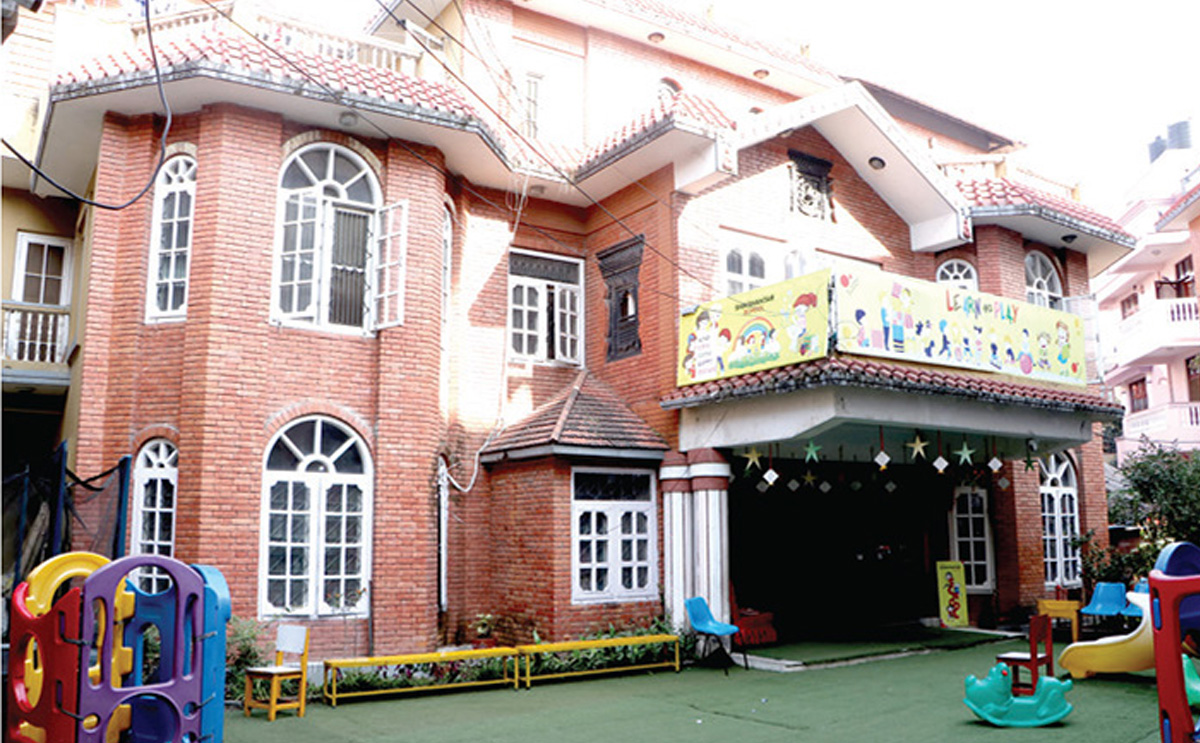
Suryanath Upadhyaya, former chief commissioner at CIAA, says that impunity has played a part in this and the lack of mechanism to punish officials responsible to implement court verdicts is also responsible for this situation. “That verdict remains unimplemented for years is indicative of the country’s systemic failure,” he says. “There would be no way out until there’s a mechanism to make the officials tasked with implementing the verdicts responsible.”
When such properties are not seized, the convicts and their families tend to use them for income. And they tend to use that income to influence officials and to elongate the implementation of the order, say court officials.
Nepal Police is also involved in the implementation of such orders. But previously, only the court was responsible for that. Now the home ministry’s graft property management department is also tasked with that responsibility. But the department, established in Kartik, 2078 BS, appears dormant. The department saw nine director generals within three years but none of them prioritised property confiscation.
The CIJ enquired about this with the department’s incumbent director general, Suresh Panthi. He replied that he was unaware about why there was a delay in management of such property but now the work would move forward speedily. “We have already moved forward the process to implement the orders,” he said. “There are various committees formed for details collection and necessary coordination. We have also moved forward the process to prepare a new directive to ease property confiscation.”
According to the Offence related to Assets and Goods (Freezing and Confiscation) Act-2070, the Cabinet has to take a decision to seize properties.
The main responsibility to implement the order is Supreme Court’s implementation directorate. While it implements many such orders, it sends others to respective district courts. Sarojraj Regmi, spokesperson of the directorate, claims that his office sends a letter to district courts for the implementation of such orders and district court is most responsible to implement such orders. He also claimed that they were working with district courts for the job.
But why has there been no implementation? Gehendraraj Regmi, spokesperson of the Special Court, admitted to lax implementation. “Special Court justices occasionally monitor the implementation of such orders but they have found that there hasn’t been effective work from district courts,” he said, without elaborating the reason behind that.
Dhan Bahadur Karki, an official tasked with order implementation at Kathmandu District Court, however, says that as compared to cases where people are the victims, implementation in cases related to property confiscation tend to be slower. “It’s been relatively slower to implement such verdicts. Previously, there happened to be a confusion over what agency was responsible for that but after the formation of the graft property management department, the work has started,” he said.
According to Offence related to Assets and Goods (Freezing and Confiscation) Act-2070, in case of Kathmandu Valley, the department has been tasked with the implementation job. Outside the Valley, a committee led by Chief District Officer holds that responsibility. But the district administration offices don’t seem interested in carrying out this work.
Meanwhile, what is surprising is that none of the government agencies appear to have kept record of the properties that need to be seized. The Supreme Court’s directorate doesn’t have a record either. Regmi, the spokesperson of the directorate, said, “We haven’t been able to keep record of properties that need to be confiscated but we are doing homework on this.”
According to officials at the department under the home ministry, an estimated 100 houses and lands remain to be seized. The courts pass verdicts on lands and houses on basically corruption and money laundering cases. But there’s a lack of integrated record, and of course lack of implementation. Panthi, the director general, however, insists that work towards keeping record is ongoing.
Are the lack of record and confusion over responsibility the main reasons behind the lack of implementation of the orders? But there seem to be plenty of other reasons behind it. For instance, as one official at the grant property management department says, “When there was an effort to seize the house and land of former assistant secretary Murari Babu Karki, he came to the office and ordered the halt in the process saying he had connections with high-level officials. When we tried to confiscate Khum Bahadur Khadka’s property, Congress leader and then deputy prime minister Purna Bahadur Khadka pressured us against it.” As a result, both these properties are not confiscated yet.
Phadindra Mani Pokharel, the former director general of graft property management department, admits that there tends to be pressure against confiscation. “When I was incumbent, I tried to seize Murari Karki’s property but there was pressure against doing it,” he recalled. “Same happened when I moved forward to seize Amodananda Mishra’s Lazimpat property. I retired amid this.”
According to Pokharel, the directive to evaluate properties that needed to be confiscated was sent for approval during his tenure. There have been three director generals at the department since Pokharel, who served between 28 March, 2023 and 7 November, 2023. But the directive hasn’t been issued yet.
Maneuvering based on confusions regarding the verdicts
Not all verdicts related to property confiscation are clear. In many, there seems to be a lack of legal clarity. For instance, in Khum Bahadur Khadka’s case, the Supreme Court has ordered a confiscation of an additional Rs. 1 million 92 thousand from his property. But government officials have been in confusion over how to calculate the property amounting the additional sum. An application from Khadka’s family over this has reached the Supreme Court through the graft property management department and the order implementation department.
The Khadka family has demanded that they be allowed to use the property after paying the additional amount to the government. There’s no difficulty in confiscating the property as the court hasn’t passed any decision regarding their application. But the authorities concerned haven’t made any move towards that.
Officials at the graft property management department say that since the Supreme Court verdict was passed long ago and the over Rs. 2 million additional sum was calculated during that period, taking the same amount now and not confiscating the property would go against the spirit of the verdict.
Krishna Bahadur Shahi, assistant secretary at the department, claims that the implementation of the verdict has been slow because of that unclarity. “We requested the court to clarify on this matter,” he said. “We will go into implementation once it’s clear.” But it’s clear that Khadka’s 1.5 ropani land and the house built on it be confiscated as per the verdict, but it remains unimplemented. The application of the Khadka family has become just a façade for officials to slow down implementation.
There’s a lack of such clarity on Kedar Nath Dhungana’s case as well. On 6 August, 2017, the Supreme Court had ordered that his house and other properties worth Rs. 1.8 million 64 thousand 162 built on kitta number 121 and 122 land in Lalitpur-5 and the income generated from it be confiscated. But because of a lack of clarity over how to ascertain the income generated from it, the officials haven’t moved forward towards implementing the verdict.
What has stopped the confiscation of bank balance?
In corruption cases, there also tends to be verdicts to seize bank balances and stocks. But surprisingly, they also remain unimplemented. In Khum Bahadur Khadka’s case, the court ordered that the Rs. 2.5 million amount deposited in the name of his wife, Shila Sharma Khadka, at Everest Bank be seized, but the order hasn’t been implemented yet.
Likewise, in Keshar Jung Khadka’s case, the court had ordered the confiscation of amount in the name of his family at 21 bank accounts that had as many as Rs. 2.3 million 7,675 but that order also didn’t get implemented.
In Ramagaya Prasad Chaturbedi’s case, the court had ordered the confiscation of Rs. 1.3 million 5,955 deposited at six bank accounts and shares worth Rs. 3 million of Nepal Medical College, Rs. 3 million at Om Hospital, and Rs. 500,000 at Shikhar Paints. But this order too remain unimplemented.
Meanwhile, the court had ordered the confiscation of Rs. 8,80,758 deposited in six bank accounts in the name of Kedar Nath Dhungana and his family, but this order is also in limbo.
So it is with the case of Aananda Prasad Khanal. The court had ordered the confiscation of Rs. 1.8 million 95,955 in 13 bank accounts in the name of Khanal and his family but it remains in limbo as well.
According to Offence related to Assets and Goods (Freezing and Confiscation) directive-2077, the director general of the property management department himself can seize the amount in bank accounts and bring it to government account. But what is the department waiting for? Director general Panthi claims that he has moved forward with the process.
This lax implementation is risky for the country because the Financial Action Task Force (FATF), which monitor money laundering, is about to put Nepal on its gray list. According to a recent report by the Force’s Asia Pacific Group, submitted to Nepal government, the country is all but certain to be gray-listed. The report mentions that the country hasn’t made efforts to confiscate graft property. It has suggested that the agencies concerned be strengthened and made more effective. Confiscation of property is sensitive regarding matters related to money laundering.
Rup Narayan Bhattarai, a former director general of Money Laundering Investigation Department, notes that the report by the FATF points out Nepal’s weakness regarding confiscation of property amassed through illicit means. “Despite FATF’s suggestions, there has been a lack of coordination between the property management department and the courts,” he said. “This is a major problem. The government’s indifference has also hindered the effectiveness of the department and other agencies concerned.”
More Investigative Stories
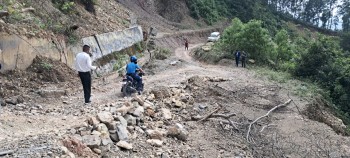
In Koshi Province, DPRs worth millions for projects never to be built
Many detailed project reports (DPRs) prepared by the Koshi provincial government at the cost of tens of millions are shelved....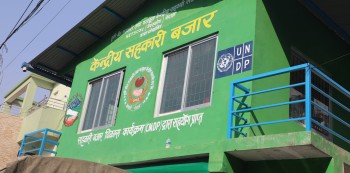
Uncooperative cooperatives
A Rs1 billion project aimed at promoting farmers failed due to mismanagement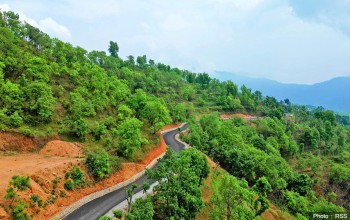

Comment Here